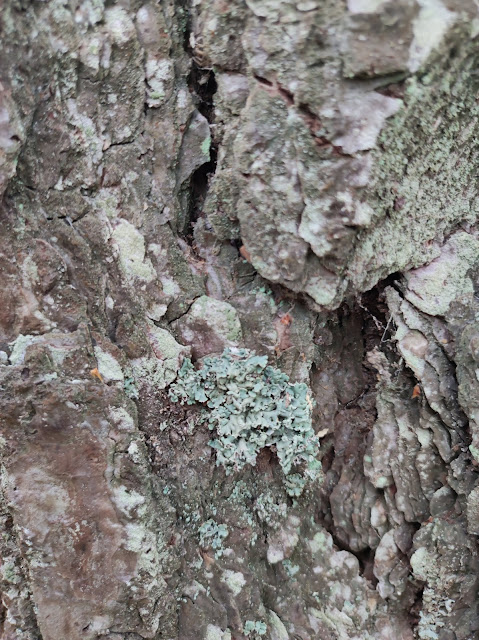Crustose,
thallus white ecorticate. Apothecia 0,2-0,5mm across, black disc often white
pruinose; white thalline margin with large crystals of calcium oxalate. Epithecium
brown, hymenium colourless. Hypothecium colourless to pale brown, I+ blue, K/I+
violet. Asci 8-spored, with I+blue ring in tholus. Ascospores 3-setptate,
hyaline, 24-28 x 4-5 μm.
Photobiont: Trentepohlia
Spot test: thallus
K-, C-, KC-. P-, UV-
Chemistry: thallus
with Roccellic acid.
Habitat: On bark in
humid woodlands.
Distribution: Mediterranean-Atlantic.
Locality data:
Location: Monestir de Sant Benet, Sant Fruitós del Bages (Bages)
Ecology: On Robinia pseudoacacia.
Altitude: 234 m
Climate: Subhumid Continental Mediterranean (Tmm=13-14,0ºC, 550-600 mm)




























